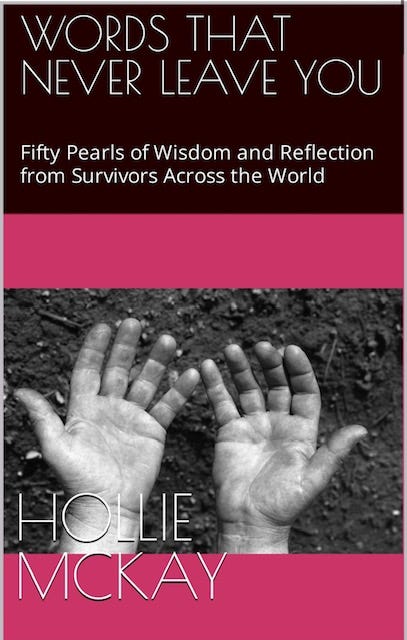Pregnant and denied prenatal screenings under the guise they are “not medically necessary” by insurance? Check. It’s been weeks of tearing my hair out in frustration over the thousands and thousands in red to my name despite paying an exorbitant amount each month, bounced between third-party vendors, dropped from calls after hour-long hold times and no real explanation for why the standard testing (which I have in writing should be covered without out-of-pocket expenses) and then coming to understand the physician (paid by the insurance company) to deny the claim has absolutely no experience in prenatal care.
I think of all the countries I have traveled to for work, and I am hard pressed to think that any one of them undervalues the process of catering to the miracle of life as much as my own beloved nation, regardless of what talking points political figures espouse. Nevertheless, I am certainly not alone in navigating the scam-riddled medical insurance arena and it isn’t my first brush with a painfully flawed system.
But there is so much about how this whole thing works that they don’t teach us in school. Keep reading and get ready to fight for yourself if it ever happens to you. The devil is in the details we so often overlook.
A couple of years ago, I suddenly developed a blood blister on my tongue so huge I couldn’t speak or close my mouth while visiting a friend, rendering a late-night ER visit. After a quick examination, then a two-second lancing by the physician on-call, I was home again. Despite having top premium healthcare insurance, the co-pay clocked in at several thousand dollars – and a listing of services I was unaware I had. Irritated by perhaps more so naïve, I begrudgingly paid the bill under the belief that the miscalculation was on me, not the hospital or insurance company.
Furthermore, a good friend told me a few months ago that she received critical lab results without context or professional breakdown. So, she texted the prestigious and well-known American medical institution, only to be told she needed to make another appointment for a professional to explain the results. She later noticed she was charged an appointment fee for the brief text exchange.
I could detail such stories for days, as everyone has a horror story about the U.S. healthcare system. Yet, our country spends more on health care than any other high-income nation, bestows the highest rate of individuals with multiple chronic health conditions and obesity, and is the number one reason individuals file for bankruptcy. I’ll never forget almost a decade ago watching helplessly as a good friend was dying from a recurring cancer she fought for more than ten years. Her darkest and final months on the planet were spent refusing to answer the door and phone, fearing the badgering debt collectors, as she could not keep up with the mounting medical bills as the cancer became more and more aggressive.
Why is the American health system so broken? Let’s start with the behemoth that is the for-profit insurance companies. Mind you; I am all for capitalism – but not what increasingly seems like beyond borderline corruption and criminality. You probably noticed that your out-of-pocket expenses have kept rising over the past decade for no justifiable reason. Perhaps you try to save money by opting for a lower premium, but that only triggers a surge in your deductible – the total amount you must pay before your insurance starts to cover costs.

And sadly, most of those out-of-pocket expenses don’t go to your doctor or medical professionals who have dedicated their lives to what is otherwise a noble profession, but to insurance and hospital executives, corporate lawyers and pharmaceutical companies.
Pro Publica recently released a fascinating report detailing how one of the country’s major insurance providers, Cigna, instantly rejects a claim on medical grounds without even opening the patient file, leaving people with unexpected bills. (I suspect this was the case in my prenatal claim, although with a different but equally as major company). While legal protocol states that company doctors must use their expertise to review patient files and claims before repudiation, Cigna (and other major insurance players) use an inbuilt algorithm to flag discrepancies between diagnoses and company-approved tests and procedures. Thus, denials are rubber-stamped in fast and streamlined batches – in upwards of thousands every few seconds – without further examination.
It would be an administrative pain to give each submission due diligence, especially in doing it how we automatically assume it is done, which would require much more human resources. After all, research shows only five percent of people appeal a denial, with most time-pressed patients preferring to pay the bill away than deal with the back-and-forth.
Moreover, you’re lucky if you can get a real-life representative on the phone in less than an hour’s wait time. And if you do, there is a good chance you will be rerouted to different departments, long-winded, extraneous voice menus, and then the call conveniently drops. If someone eventually responds, it typically takes days, weeks, or even months. The system isn’t designed to support you and your family’s health needs. Instead, the system is tailored to make you shut up, sit down and pay up without question, so that companies can bolster their bottom lines.
Analysts also estimate that hospitals overcharge patients over $10 billion each year – and insurance companies aren’t likely to question the legitimacy on your behalf. In what can sometimes seem like a joint scam, you may end up with excess – and significant – charges even when you carefully stick to approved doctors in your health insurance network. Perhaps the surgeon and the facility are listed in-network, but maybe the anesthesiologist or physiotherapist brought in to assist you were not. Then there is the aggrandization of medical procedures and pharmaceuticals. Insurance might cover the cortisone injections for your knee, but a simple knee guard will cost you steeply out-of-pocket.

And while initial expectations over a decade ago were that the Affordable Care Act – often called Obamacare – would fix some exploitative loopholes, that has proven false.
The Act mandates that every U.S. citizen carry insurance (still not the case) and was primarily supported by, and worded by, the health insurance lobby and industry representatives. The bill’s passing in 2010 meant everyone had to purchase their product, and gave them carte Blanche to raise premiums and deductibles and reduce the number of accessible services, using the legal enactment as an excuse with no solid basis. Not surprisingly, major health insurance companies’ profits have soared year by year – an average of 61 percent over five years.
Subsequently, as you struggle to make ends meet, the top-tier executives at the five largest for-profit health insurance companies are making bank in excess of combined revenues exceeding $200 million. Furthermore, Americans fork out nearly double the amount for pharmaceutical drugs as those from other highly industrialized nations – while the likes of the Johnson & Johnson CEO pocket upwards of $29.6 million annually.
Moreover, if you think the “nonprofit” side of the healthcare equation is somewhat more modest, think again. Many such “foundations” collect billions, leaving patients in deep debt and enjoying their tax-exempt status. They spend only a fraction of tax savings on those in need. Salaries aren’t prudent, either. For one, in 2018, then-CEO of nonprofit healthcare conglomerate Kaiser Permanente, Bernard Tyson, raked in almost $18 million in earnings.
Nevertheless, there are action steps insurers could take to reduce costs – but they don’t. How often do you hear about fraud in the healthcare industry and how few times do you see cases prosecuted? At least ten percent of the growing healthcare bills are gobbled up by illicit fraudsters. Yet fraud is far from a top administrative priority for most leading companies. From their purview, it takes too much time, resources and staff to prove a case of criminal intent. Medical providers can easily counteract questions or accusations with claims that it was a staffer’s human error or a medical professional experimenting with a new procedure or treatment plan. No provider will willingly admit to healthcare deceit. Therefore, insurers – who still need a quota amount of doctors and providers in-network to appear alluring to employers and customers – don’t always see going up against them as beneficial investment returns.
It is also a political game. Health insurance companies also spend millions in state-level campaign contributions each election cycle. That’s your hard-earned money recycled back into the game of influence in ways that may not serve your needs or beliefs.

Nearly half of the working-age American population struggles with medical bills or purports to pay them off. In addition, unlike many comparable high-earning countries, our warped healthcare arena spends money on treatment rather than prevention. We spend the massive deluge of funds on sick care and to keep one alive just long and ill enough to remain dependent on the highly lucrative health and pharmaceutical ring.
So what can you do in the meantime? Check your statements. Every claim. And be willing to stay on that cumbersome phone line and fight. File that appeal. Be the five percent.
PLEASE CONSIDER A PAID SUBSCRIPTION TO THIS SUBSTACK TO HELP KEEP INDEPENDENT WRITING AND JOURNALISM ALIVE. THANK YOU SO MUCH FOR YOUR SUPPORT.
For speaking queries please contact meta@metaspeakers.org
HOLLIE’S BOOKS (please leave a review)
** Short read of meaningful lessons gleaned from the ordinary forced to become extraordinary
Order your copy of “Afghanistan: The End of the US Footprint and the Rise of the Taliban Rule” out now.
For those interested in learning more about the aftermath of war, please pick up a copy of my book “Only Cry for the Living: Memos from Inside the ISIS Battlefield.”
If you want to support small businesses:















Share this post